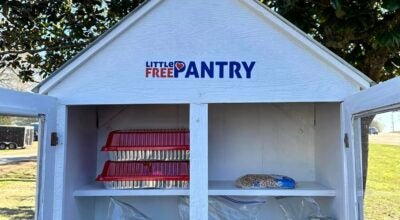Comp plan committee hears about homeless, need for affordable housing
Published 12:00 pm Wednesday, May 25, 2016
Folks who live in Lafayette County can agree that one of the biggest issues facing the community is the need for affordable housing, but homelessness is a growing problem as well.
During a county comprehensive plan steering committee meeting Tuesday, two people familiar with both issues informed the group of just how dire both could be for the county if a solution is not found soon.
Sherry Jenkins Williams, a volunteer with Doors of Hope, said homelessness in the county is a problem that is overlooked by many because Oxford does not have folks sleeping under bridges or on park benches.
“But it is here,” Williams said. “Homelessness here does not look like big cities. Here, we have a lot of situational homelessness. Most don’t have a set place to live and move from house to house.”
She said her nonprofit agency works to make those who are homeless self-sufficient rather than dependent. Most of them are working poor who are just one paycheck away from being on the street.
Williams said the latest data from the 2015 census indicates Lafayette County has a population of 53,000 residents and a poverty rate of about 26 percent, which means more than 13,000 people are considered in poverty in the county. They can’t afford the high rental prices that continue to increase.
“All those people are one paycheck or a major problem away from being homeless,” Williams said.
During a recent homeless summit held in Oxford, more than 30 agencies gathered to exchange ideas and network to find solutions to the growing problem.
One key finding from the summit was the need for affordable housing for residents once they are self-sufficient. After succeeding in the Doors of Hope program, most are making around $1,200 a month, but Williams said, “we can’t find affordable places for them.”
“Go find housing on that amount of money for this county. We don’t have the housing here for them,” Williams said. “Our service people need to live somewhere. It’s unconscionable to not have a place for people to live, particularly when they’re working.”
Williams would like to see incentives for builders to come in and construct units with typical affordable rent in the range of $450 to $600 per month. But even with incentives, land prices in Oxford would not make a project feasible, which means the development would have to be outside the city limits and that raise the issue of sewer not being available for the project.
One person who may have a reasonable solution is Stewart Rutledge, who has developed workforce housing in other parts of Mississippi, as well as Tennessee and Texas through Section 42 federal housing. The program started under the Reagan Administration but is not as widely known as Section 8 or public housing.
Section 42 housing is based on federal tax credits, which requires the development to be rent restricted, income restricted and units that are built to high-quality standards. The units are lease to own. After 15 years, the occupier of the unit can purchase the home. Lafayette County became eligible for the program in the last year.
“Renters pay in cash,” Rutledge said. “We can do credit checks, background checks and there are no limit on the degree of restrictiveness. We are able to target residents who generally need housing rather than a blind program like Section 8. It creates communities.”
Rutledge created such a development in Holly Springs that has been quite successful since construction three years ago. Ninety units filled up quickly and Rutledge, who lives in Lafayette County, expects the same response if the program becomes a reality locally.
“The demand here is so high,” Rutledge said.
Town hall meetings regarding the county’s development of a comprehensive plan will be held June 2 at the Yocona Community Center, June 6 at the Philadelphia Community Center and June 9 at the Oxford Conference Center. All of the meetings begin at 6 p.m. and public input is welcome.
Also on transportation
Also this week the transportation committee of the comprehensive plan met, and Mike Slaughter, who is developing the county’s comprehensive plan, showed committee members several different maps outlining what transportation looks like currently and what is planned and projected.
According to figures from the Mississippi Department of Transportation, from 2005 to 2014, the number of motorists driving in the county increased by 18,000 in the county, and the numbers increased by 12,000 in the city.
But from 2010 to 2014, the average numbers only increased by 80 in the county and actually decreased by 3,400 in the city.
Slaughter admitted these numbers surprising considering the population growth in the county, but there are various factors that could be attributed, including more residents using the transit system in the city.





